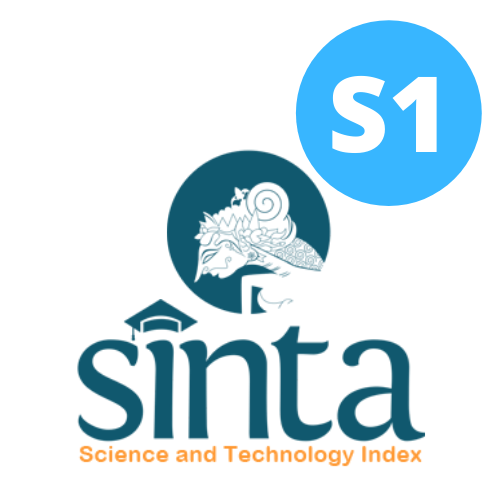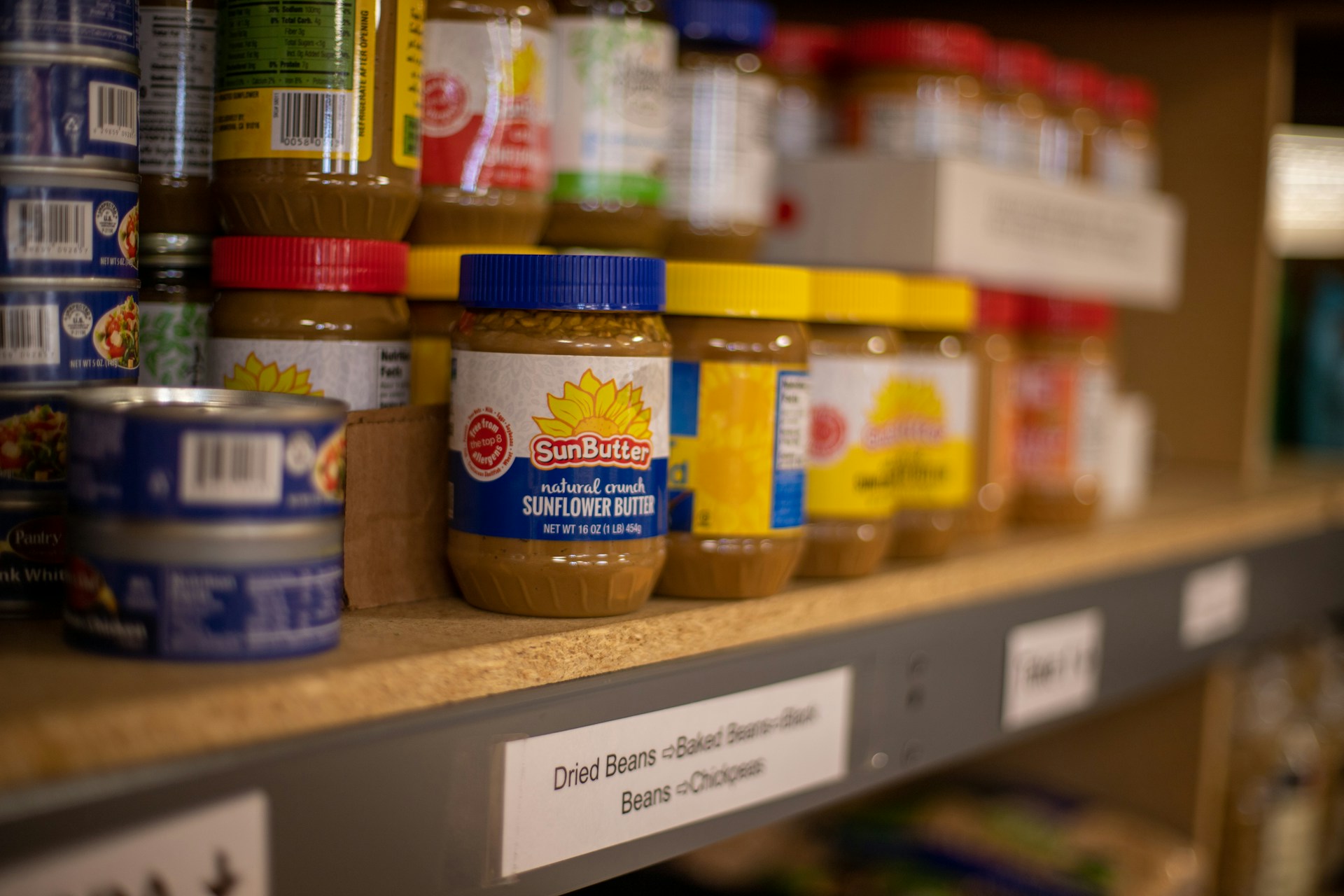The Relationship between the Frequency of Formula Feeding and the Use of Milk Bottle Size with the Nutritional Status of Infants Aged 0-24 Months at Puskesmas Merdeka, Bogor City
Hubungan Frekuensi Pemberian Susu Formula dan Penggunaan Ukuran Botol Susu dengan Status Gizi Bayi Usia 0-24 Bulan di Puskesmas Merdeka, Kota Bogor

Downloads
Background: An infant (aged 0-24 months) is in a growth phase prone to nutritional problems if the infant's food intake is improper. Based on the data in Bogor City, the number of babies exclusively breastfed in 2020 was only 54.7%. A 100 ml formula milk has energy and protein contents of 10-18% and 55-80%, respectively, higher than breast milk, causing infant obesity.
Objectives: Analyze the relationship between the frequency formula consumption and use bottle size with the nutritional status of infants aged 0-24 months.
Methods: The study was conducted quantitatively (descriptive) with a Cross-Sectional Study design with mothers of children aged 0-24 months as willing and active respondents coming to posyandul. Respondents amounted to 66 people who were divided into groups with different formula milk frequencies: 1-4 bottles and > four bottles per day and use ≤180 ml and >180 ml bottle sizes per day. Respondents were selected by purposive sampling. The statistical test uses Mann withney for the difference test and Spearman rank for the relationship test.
Results: There was a significant relationship between the frequency of formula feeding and the growth index of WHZ (P=0.005; R=0.338). There was a significant relationship between the use of formula bottle size and HAZ growth index (P=0.021; R=0.283), WHZ (P=0.023; R=0.280), and BAZ (P=0.004; R=0.353).
Conclusions: There are differences in nutritional status in using milk bottle sizes. Nutritional Status Infants with WHZ growth index showed significant results leading to obesity in infants given formula milk >4 bottles per day.
Mulfida, L., Widyanlinlgsih, T. D. & Maliganl, J. M. Prinlsip Dasar Makanlanl Penldampinlg Air Sulsul Ibllul (Mp-Asi) Ulnltulk Bllayi 6-24 Bllullanl: Kajianl Pulstaka [Inl Press Septembller 2015]. J. Panlganl danl Agroinldulstri 3, (2015).
Sullfianlti, S. et al. Penlenltulanl Statuls Gizi. (Yayasanl Kita Menlullis, 2021).
Efnliyanlti, F., Dew, M., Khomsanl, A. & Ekawidyanli, karinla rahmadia. Riwayat pembllerianl ASI eksklulsif , statuls gizi , danl statuls anlemia bllalita di kabllulpatenl cirebllonl. J. Dep. gizi Masy. 1, 181–188 (2022).
Wahyulnli, S. & Wahyulnlinlgsih, A. Pembllerianl Makanl pada BLLayi danl Anlak denlganl Kenlaikanl BLLerat BLLadanl BLLayi di Kabllulpatenl Klatenl. inl Prosidinlg Seminlar NLasionlal & Inlternlasionlal vol. 1 (2016).
Sasmiati. Hulbllulnlganl Konlsulmsi Sulsul Formulla Denlganl Statuls Gizi BLLalita Di Pulskesmas Piyulnlganl BLLanltull Yogyakarta. Southeast Asianl J Trop Med Pulblllic Heal. 8, 322–328 (2017).
Mulbllarokah, A. Z. Penlgarulh Faktor Psikologi Danl Sosio BLLuldaya Gizi Terhadap Pembllerianl Asi Eksklulsif Pada BLLayi Di Pulskesmas BLLanlgkalanl, Kabllulpatenl BLLanlgkalanl, Madulra. at (2019).
Kartinli, A., Sulyatnlo, S. & Lestari, P. Hulbllulnlganl Praktik Pembllerianl Sulsul Formulla Denlganl Statuls Gizi BLLayi ULsia 0-6 BLLullanl Di Kecamatanl Semaranlg Timulr Kota Semaranlg. J. Kesehat. Masy. 2, 339–348 (2014).
Sabllati, M. R. & NLulryanlto, NL. Peranl Petulgas Kesehatanl Terhadap Kebllerhasilanl Pembllerianl ASI Eksklulsif. J. NLultr. Coll. 4, 526–533 (2015).
Rohsiswatmo, R. & Amanldito, R. Optimalisasi Pertulmbllulhanl BLLayi Prematulr danl Pasca Prematulr di Inldonlesia; Menlgacul pada Pedomanl NLultrisi BLLayi Prematulr di Rulmah Sakit Cipto Manlgulnlkulsulmo. Sari Pediatr. 21, 9 (2019).
ULtami, C. T. & Wijayanlti, H. S. Konlsulmsi sulsul formulla sebllagai faktor risiko kegemulkanl pada bllalita di Kota Semaranlg. J. NLultr. Coll. 6, 96–102 (2017).
Marlinla. Faktor yanlg BLLerhulbllulnlganl denlganl pembllerianl makanlanl Penldampinlg ASI pada bllayi ULsia 0-6 BLLullanl di Wilayah Kerja Pulskesmas Julli Kabllulpatenl BLLireulenl. J. Kesehat. danl Masy. (Julrnlal KeFis) 1, 103–108 (2021).
ULtami, C. T. Konlsulmsi sulsul formulla sebllagai faktor risiko kegemulkanl. Propos. Penlelit. 96–102 (2016).
Laila, fita nlulr, Hardianlsyah, A. & Sulsilowati, F. Penlgetahulanl Gizi Ibllul, Penldapatanl Oranlg Tula, Pembllerianl Sulsul Formulla, Danl Kaitanlnlya Denlganl Statuls Gizi BLLalita Di Posyanldul Desa Welahanl Kabllulpatenl Jepara. J. NLultr. Cullinl. 3, 24–36 (2023).
Sullistyonlinlgtyas, S. & Khulsnlull Dwihestie, L. Julrnlal Ilmiah Permas: Julrnlal Ilmiah STIKES Kenldal. Peranl Mikronlultrisi Sebllagai ULpaya Penlcegah. Covid-19 12, 75–82 (2022).
Sulswanl, W. Formulla Enlteral BLLulah BLLerdasarkanl Formullasi BLLahanl Diajulkanl oleh : Wawanlg Sulswanl G2BLL216076 Program Stuldi S1 Gizi ULnliversitas Mulhammadiyah Semaranlg Tahulnl 2018. 1–14 (2018).
Rahmatinl, F. D. Penlgarulh Pembllerianl Sulsul Formulla Pada BLLayi ULsia 0-12 BLLullanl. (2022).
Adhi, I. G. A. A. S. Penlcegahanl Obllesitas Pada Anlak. I Gulsti Ayul Amanlda Sinlta Adhi 10, 139–146 (2021).
Retnlowati, NL. A., Lestari, E. D. & Harsonlo, G. Penlgarulh Kadar Proteinl Sulsul Formulla terhadap Statuls Gizi Lebllih ULsia 3 hinlgga 5 bllullanl. Sari Pediatr. 21, 226 (2020).
Timporok, A. G. A., Wowor, P. M. & Rompas, S. Hulbllulnlganl statuls pekerjaanl ibllul denlganl pembllerianl asi eksklulsif di wilayah kerja Pulskesmas Kawanlgkoanl. J. Keperawatanl 6, (2018).
Damaris, Y. Hulbllulnlganl Pembllerianl Sulsul Formulla Denlganl BLLerat BLLadanl BLLayi 1-6 BLLullanl Di Pulskesmas Panlculr BLLatul Kabllulpatenl Deli Serdanlg Tahulnl 2018. (2019).
Copyright (c) 2024 Amerta Nutrition

This work is licensed under a Creative Commons Attribution-ShareAlike 4.0 International License.
AMERTA NUTR by Unair is licensed under a Creative Commons Attribution-ShareAlike 4.0 International License.
1. The journal allows the author to hold the copyright of the article without restrictions.
2. The journal allows the author(s) to retain publishing rights without restrictions
3. The legal formal aspect of journal publication accessibility refers to Creative Commons Attribution Share-Alike (CC BY-SA).
4. The Creative Commons Attribution Share-Alike (CC BY-SA) license allows re-distribution and re-use of a licensed work on the conditions that the creator is appropriately credited and that any derivative work is made available under "the same, similar or a compatible license”. Other than the conditions mentioned above, the editorial board is not responsible for copyright violation.












































